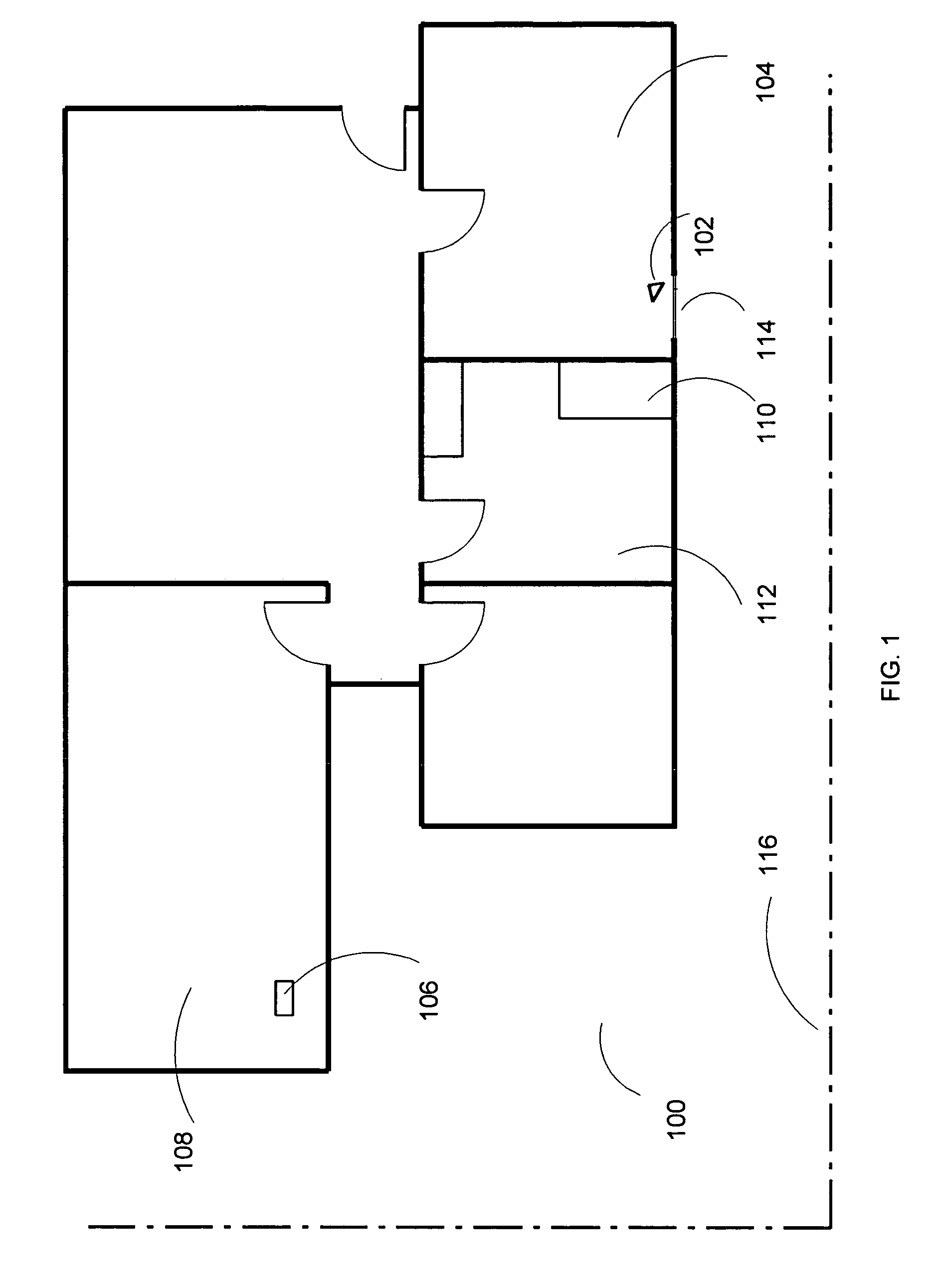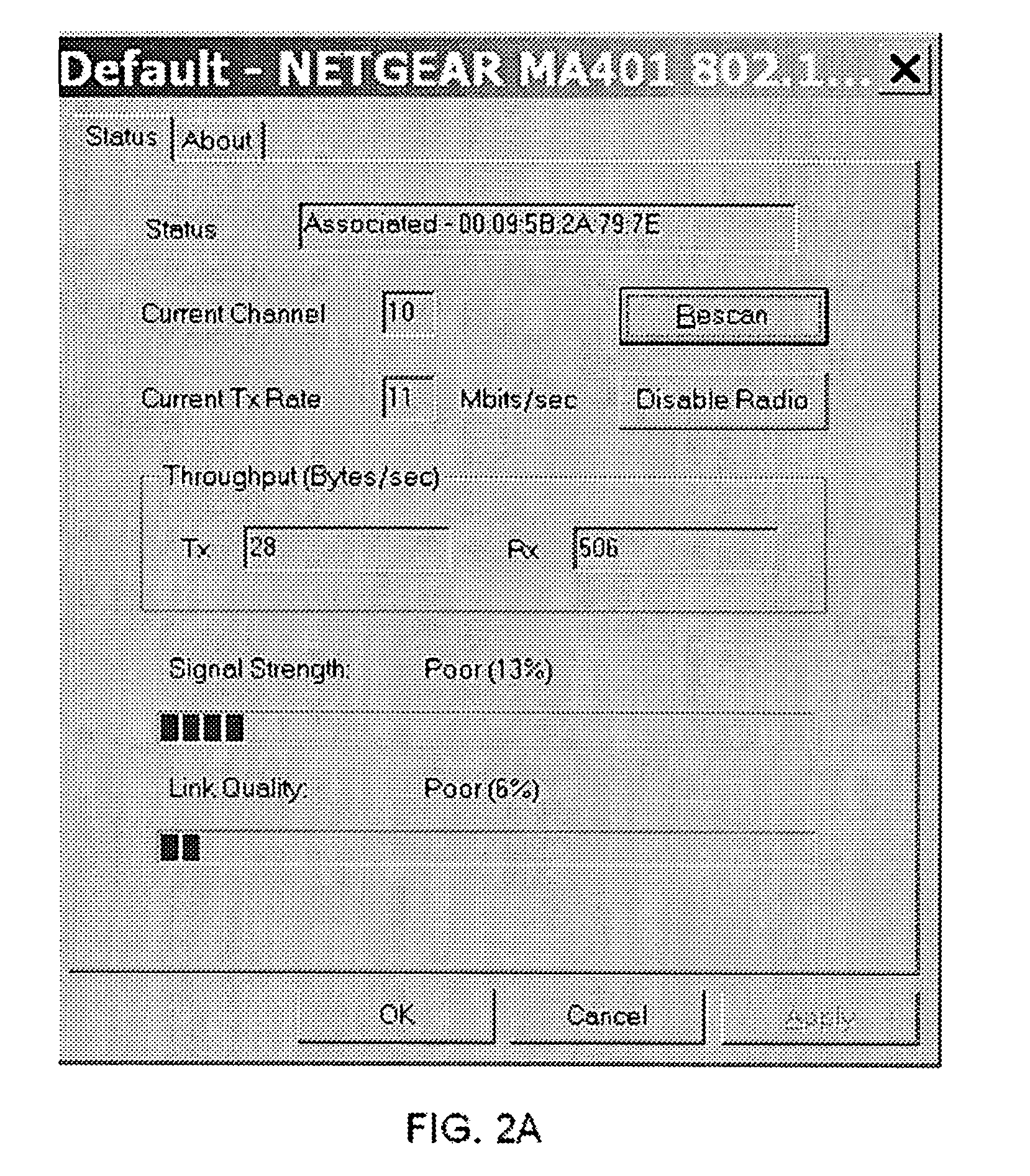Antenna directivity enhancer
a directivity enhancer and antenna technology, applied in the direction of antennas, antenna details, collapsible antennas, etc., can solve the problems of large metal objects between the access point and the computer, create interference patterns, and intermittent wireless connections, so as to improve increase the directivity of the access point antenna, and reduce the effect of signal strength
- Summary
- Abstract
- Description
- Claims
- Application Information
AI Technical Summary
Benefits of technology
Problems solved by technology
Method used
Image
Examples
embodiment 600
[0098]When all the tubes are inflated, the enhancer will be in its pre-defined 3-dimensional shape. The antenna can then fit through one or two of the holes 634 and 636, with the bottom film 632 supported by, for example, the top surface 203 of the router 204. As in earlier embodiments, there can be an additional tube inserted through the two holes 634 and 636 to set the position of the antenna, if necessary. To collapse the enhancer, one only needs to release air by opening the valve 640. In yet another example, there can also be a non-metallic film on the front side of the enhancer as in the embodiment 600 shown in FIG. 11E.
[0099]The position of the enhancer can be fixed relative to the antenna. In one embodiment, referring back to FIG. 3, the top surface of the router 204 is covered by a sheet of hooks, and there is a sheet of loops on the outside of the bottom surface 229. After the optimal position of the enhancer relative to the antenna is identified, that position can be fixe...
embodiment 910
[0123]In yet another embodiment of the invention, the antenna can be in a hole at the vertex of the dihedral surface of the enhancer. The center of the hole can be at the midpoint of the vertex. The tethered antenna can be connected to a port (e.g., the USB port) of the computer. In one embodiment, there can also be a connector, such as a USB connector, at the vertex of the enhancer. The antenna can be placed inside the enhancer and connected to the connector. The connector, whether part of the enhancer or a separate part, can be used to hold the antenna in place within the enhancer. However, sometimes the location and the size of the antenna may not be appropriate to maximize the amount of energy to be coupled into the antenna. FIG. 18B shows an embodiment 910 for such an antenna 912, except that the antenna 912 is positioned on a non-metallic or insulating board inside the enhancer 910. The positioning can be for maximizing the amount of electromagnetic energies to be coupled into...
PUM
 Login to View More
Login to View More Abstract
Description
Claims
Application Information
 Login to View More
Login to View More - R&D
- Intellectual Property
- Life Sciences
- Materials
- Tech Scout
- Unparalleled Data Quality
- Higher Quality Content
- 60% Fewer Hallucinations
Browse by: Latest US Patents, China's latest patents, Technical Efficacy Thesaurus, Application Domain, Technology Topic, Popular Technical Reports.
© 2025 PatSnap. All rights reserved.Legal|Privacy policy|Modern Slavery Act Transparency Statement|Sitemap|About US| Contact US: help@patsnap.com



